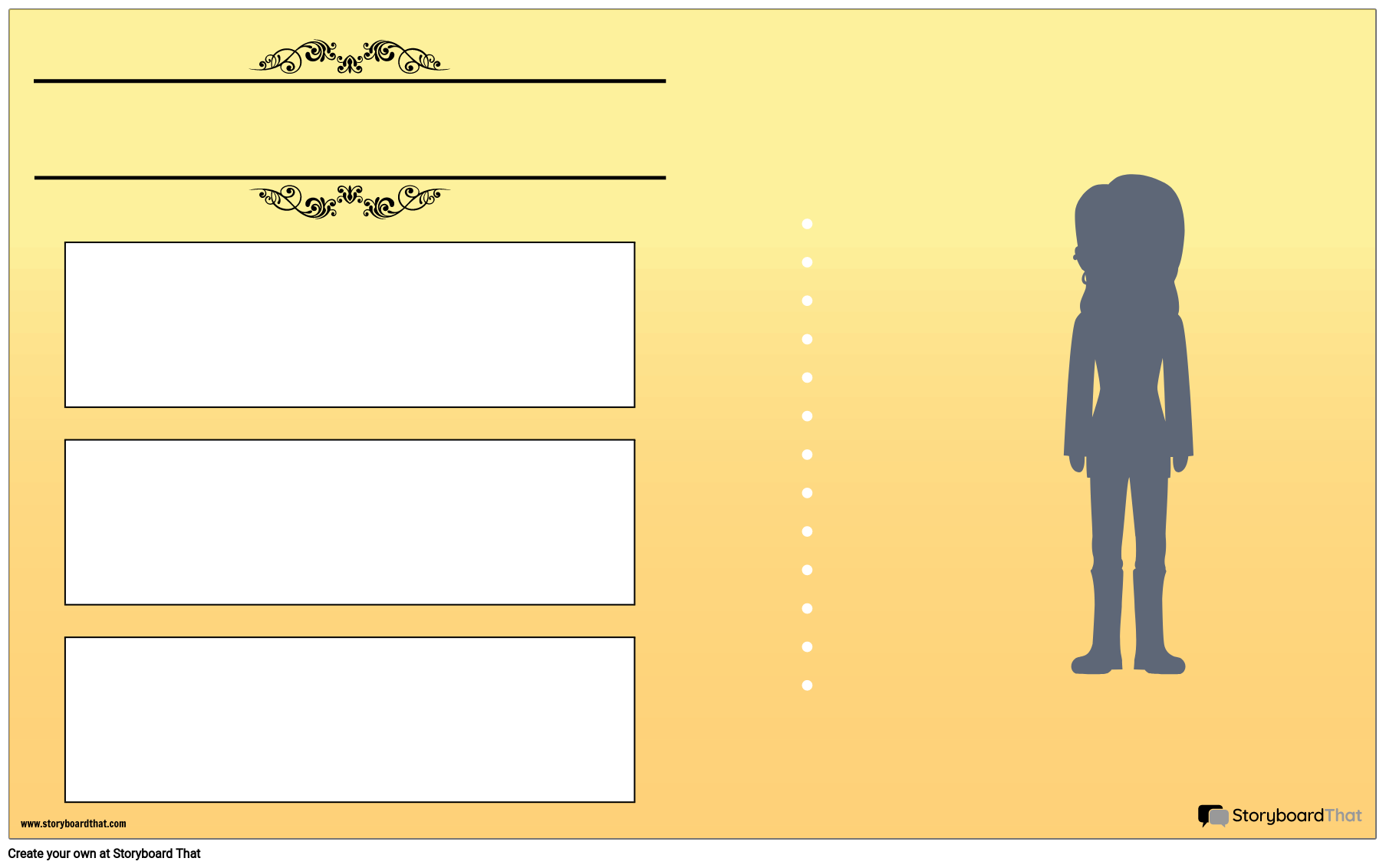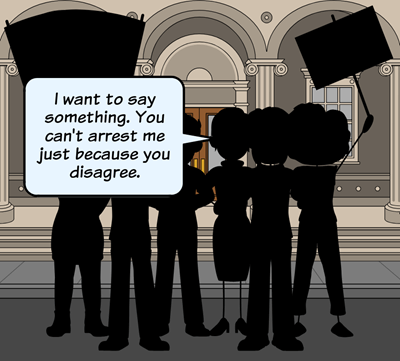Activity Overview
Not only is creating a poster fun, it's also a helpful way for students to highlight the most important aspects of a historical figure alongside visuals. Biography posters can be used as final assessments or to supplement a further research and presentation project. This project does require students to do additional research, but is easy to fit into any history unit!
Using one of the templates or starting from scratch on the poster layout, students will build up a profile of their chosen figure. Depending on requirements or complexity, students can add timelines to their posters. However, the wide variety of characters, scenes, and items makes it very easy for students to customize their project to fit any guidelines.
Find more biography poster templates to add to this assignment if desired!
Template and Class Instructions
(These instructions are completely customizable. After clicking "Copy Activity", update the instructions on the Edit Tab of the assignment.)
Student Instructions
Create a biography poster detailing the life of your chosen or assigned historical figure.
- Gather important facts & information about your figure.
- Click "Start Assignment".
- Select appropriate scenes, characters, textables, & other items to create your poster.
Lesson Plan Reference
- [ELA-Literacy/W/9-10/2] Write informative/explanatory texts to examine and convey complex ideas, concepts, and information clearly and accurately through the effective selection, organization, and analysis of content
- [ELA-Literacy/W/9-10/6] Use technology, including the Internet, to produce, publish, and update individual or shared writing products, taking advantage of technology’s capacity to link to other information and to display information flexibly and dynamically
- [ELA-Literacy/W/9-10/7] Conduct short as well as more sustained research projects to answer a question (including a self-generated question) or solve a problem; narrow or broaden the inquiry when appropriate; synthesize multiple sources on the subject, demonstrating understanding of the subject under investigation
Rubric
(You can also create your own on Quick Rubric.)
| Proficient | Emerging | Needs Improvement | |
|---|---|---|---|
| Description | The description includes at least five important facts about the famous or historic figure. | The description includes less than five important facts or it includes information that is not pertinent to the famous or historic figure. | The description is incomplete and does not contain important information about the famous or historic figure. |
| Artistic Depictions | The art chosen to depict the scenes, characters and items that are appropriate to the famous or historic figure. They enhance the poster by symbolizing or illustrating important facts about the figure. Time and care is taken to ensure that the scenes are neat, eye-catching, and creative. | The art chosen to depict the scenes, characters and items are mostly accurate, but there may be some liberties taken that distract from the assignment. Scene constructions are neat, and meet basic expectations. | The art chosen to depict the scenes, characters and items is too limited or incomplete. |
| English Conventions | Ideas are organized. There are few or no grammatical, mechanical, or spelling errors. | Ideas are mostly organized. There are some grammatical, mechanical, or spelling errors. | Storyboard text is difficult to understand. |
How to Assess Biographical Profiles for Historical Understanding
Introduction to Assessment Criteria
Begin the lesson by introducing students to the assessment criteria for evaluating biographical profiles for historical understanding. Explain that they will be learning how to assess the completeness, accuracy, and depth of biographical profiles.
Discussion and Analysis
Guide students in a discussion and analysis of the assessment criteria: Completeness: Discuss what makes a biographical profile complete, including the inclusion of key life events, contributions, and historical context. Provide examples of thorough and incomplete profiles. Accuracy: Emphasize the importance of accurate historical facts and details. Discuss how students can verify the accuracy of their sources and information. Depth: Explore the concept of depth in biographical profiles, including the depth of analysis, insights, and connections made to the historical context. Show examples of profiles with varying levels of depth.
Applying Assessment Criteria
Engage students in applying the assessment criteria to evaluate sample biographical profiles: Provide Sample Profiles: Distribute or display sample biographical profiles of historical figures, some meeting the criteria effectively and others with room for improvement. Group Assessment: Divide students into small groups and assign each group a sample profile to evaluate using the assessment criteria. Group Discussion: Encourage group discussions where students share their evaluations and discuss what aspects of the profiles met the criteria and what could be enhanced.
Self-Assessment and Peer Review
Conclude the lesson by having students engage in self-assessment and peer review: Self-Assessment: Ask students to revisit their own biographical profiles of historical figures and use the assessment criteria to evaluate their work objectively. Peer Review: Pair students to exchange their profiles and provide constructive feedback to each other based on the assessment criteria. Reflection: Facilitate a class discussion where students reflect on the assessment process, share insights gained, and discuss how they can apply the criteria to improve their future biographical profiles.
Frequently Asked Questions about History - Biography Poster
How do I choose a historical figure for my biography project?
Choosing a historical figure for your biography project involves several considerations. First, select someone who genuinely interests you. A personal connection to the subject can make the research and presentation process more engaging. Second, think about the availability of research materials. Ensure there is enough credible information about the figure to create a comprehensive biography. Finally, consider the figure's significance and impact on history. Focus on individuals who played pivotal roles, made groundbreaking contributions, or left a lasting legacy. By combining personal interest with research feasibility and historical importance, you can make an informed choice for your biography project.
How can storyboards enhance the presentation of a historical figure's life in a biography project?
Storyboards serve as powerful visual aids that can significantly enhance the presentation of a historical figure's life in a biography project. They provide a structured and visually engaging way to organize key events, milestones, and accomplishments in a chronological sequence. Storyboards allow you to incorporate images, illustrations, and captions to complement your written content, making the biography more engaging and accessible to your audience. The visual nature of storyboards can help convey the historical figure's story more effectively, making it easier for viewers to connect with and remember the information presented. This visual storytelling approach can make your biography project more captivating and memorable.
Are there specific storyboard templates or formats tailored for creating biographical storyboards?
Yes, there are various storyboard templates and formats available that can be adapted for creating biographical storyboards. Many online platforms and software tools offer customizable templates designed for educational purposes. These templates often include sections for images, captions, and text, making it easier to structure your biography visually. Additionally, you can create your own custom storyboard layout by dividing your presentation into key sections or chapters, each dedicated to different aspects of your historical figure's life. Regardless of the format you choose, it's important to ensure that your storyboard flows logically and effectively conveys the story of the individual you're profiling. Tailoring the format to suit your project's specific needs can make your biographical storyboard a compelling and informative visual resource.
More Storyboard That Activities
US History Overview
This Activity is Part of Many Teacher Guides
© 2024 - Clever Prototypes, LLC - All rights reserved.
StoryboardThat is a trademark of Clever Prototypes, LLC, and Registered in U.S. Patent and Trademark Office
















